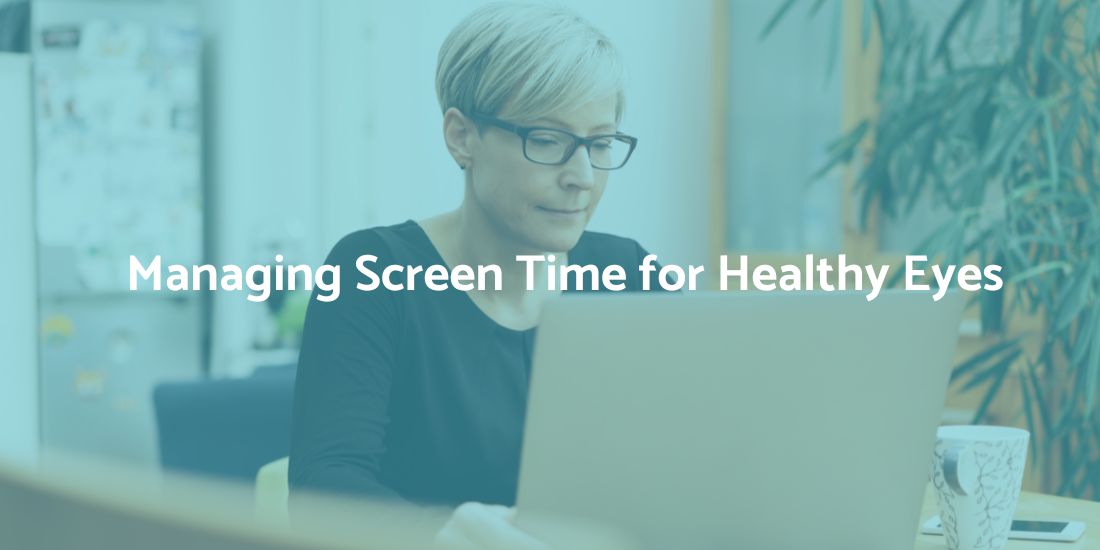In today’s technology-driven world, the use of digital devices such as smartphones, tablets, and computers is common place. While these devices are essential for work, communication, and entertainment, prolonged use can adversely affect our eye health. Gurjeet Jutley, an expert ophthalmologist based in Oxford is dedicated to helping you understand and manage digital eye strain effectively and provides a short guide on this topic below.
Understanding Digital Eye Strain
Causes and Risk Factors
Digital eye strain, also known as computer vision syndrome (CVS), arises from the intense visual demands of focusing on a screen. Unlike reading printed text, digital screens often have reduced contrast, glare, and reflections, making viewing more challenging. Additionally, the specific angles and distances involved in screen use require extra effort from the eyes.
Uncorrected vision problems can exacerbate the symptoms of digital eye strain. People with vision issues might experience increased discomfort and strain when using screens. Moreover, even those with correct prescriptions might find their glasses unsuitable for screen viewing distances, leading to poor posture and discomfort in the neck, shoulders, and back.
Symptoms of Digital Eye Strain
The most common symptoms associated with digital eye strain include:
• Eyestrain: Feeling tired or fatigued in the eyes after extended screen use.
• Headaches: Persistent headaches caused by prolonged focusing efforts.
• Blurred Vision: Difficulty in maintaining clear vision or shifting focus.
• Dry Eyes: Reduced blinking rates leading to insufficient tear distribution.
• Neck and Shoulder Pain: Poor posture from leaning towards the screen or awkward head positions.
These symptoms often depend on the individual’s visual capabilities and the amount of time spent on digital screens. While many symptoms are temporary and diminish after screen use, some may persist, leading to further complications if not addressed.
Managing and Reducing Digital Eye Strain
Follow the 20-20-20 Rule To alleviate eye strain, follow the 20-20-20 rule: every 20 minutes, look at an object 20 feet away for at least 20 seconds. This simple exercise allows your eyes to reset and reduces strain.
Adjust Screen Settings Optimize your screen settings by reducing brightness, enlarging text size, and minimizing glare. Position your screen about 25 inches from your eyes and slightly below eye level to maintain a comfortable viewing angle.
Blink Frequently Consciously blinking more often helps maintain eye moisture and prevents dryness. Consider using artificial tears to keep your eyes lubricated during prolonged screen use.
Use Blue Light Filters Many devices offer blue light filtering settings, or you can use blue light blocking glasses to reduce the potential harm from prolonged exposure to high-energy visible (HEV) light emitted by screens.
Maintain Good Posture Ensure that your seating and screen setup promote good posture. Keep your feet flat on the floor, your screen at eye level, and avoid leaning towards your device.
Importance of Professional Consultation
Regular eye examinations are crucial in managing digital eye strain. As an experienced Eye Surgeon based in Oxford, Gurjeet Jutley emphasises the importance of professional consultation for:
• Comprehensive Assessments: Identifying the presence of digital eye strain and any underlying vision issues.
• Tailored Advice: Offering personalized solutions and visual aids based on your specific needs and lifestyle.
• Ongoing Monitoring: Ensuring that your preventive measures and treatment plans are effective and up-to-date through regular follow-ups.
By implementing these practical tips and seeking professional care, you can significantly reduce the impact of digital eye strain and maintain healthy eyes in a digital world.
For expert advice and comprehensive eye care, contact Gurjeet Jutley, Cataract and Glaucoma Surgeon in Oxford

